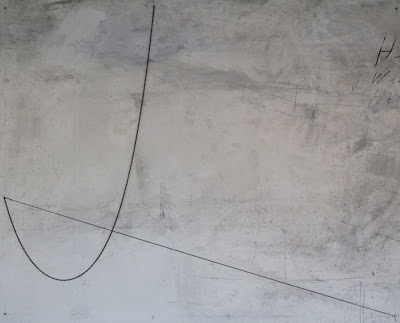

To destroy, to demolish, to annihilate, to damage is necessary to conquer the despair of being locked up in boring and stupid old problems. Creating drawings or paintings is a fight with yourself against the inner stupidity, laziness and boredom. In the battle of an idea and its materialization something has to be overcome by destroying the well known solutions already used before.
Mondriaan's quote: "I think the destructive element is very much neglected in art" is difficult to understand because his oeuvre looks so logic, solid and form from a steady evolution. But he had to conquer his own figurative work by destroying the figurative image to reach abstraction. And in his abstract paintings he was in a fight with the black lines. Although painters used coloured lines in abstract compositions before, Mondriaan had to go a long route to "destroy" the black lines in his own paintings. By painting again and again inventive compositions with quite radical decisions where to place the lines. It was a long and essential process, or a heavy fight, somewhere in the intuition of the artist to be able to paint coloured lines. He was looking into a deep black darkness, a presumption of possibilities with his visual idiom. But the battle is never won, the feeling to have to destruct the darlings which delivered such good results is manifest.

Drawing and erasing it, leaving traces, the strong notion it isn't the desired effect, so again destruction by scratching the drawing is the best thing to do. It is a well kept in hand battle. Destruction and construction are on a bascule, no running of the rails, no panicking, steered by intuition and belief. A belief without any religion, the belief in a disenchanted world.















































